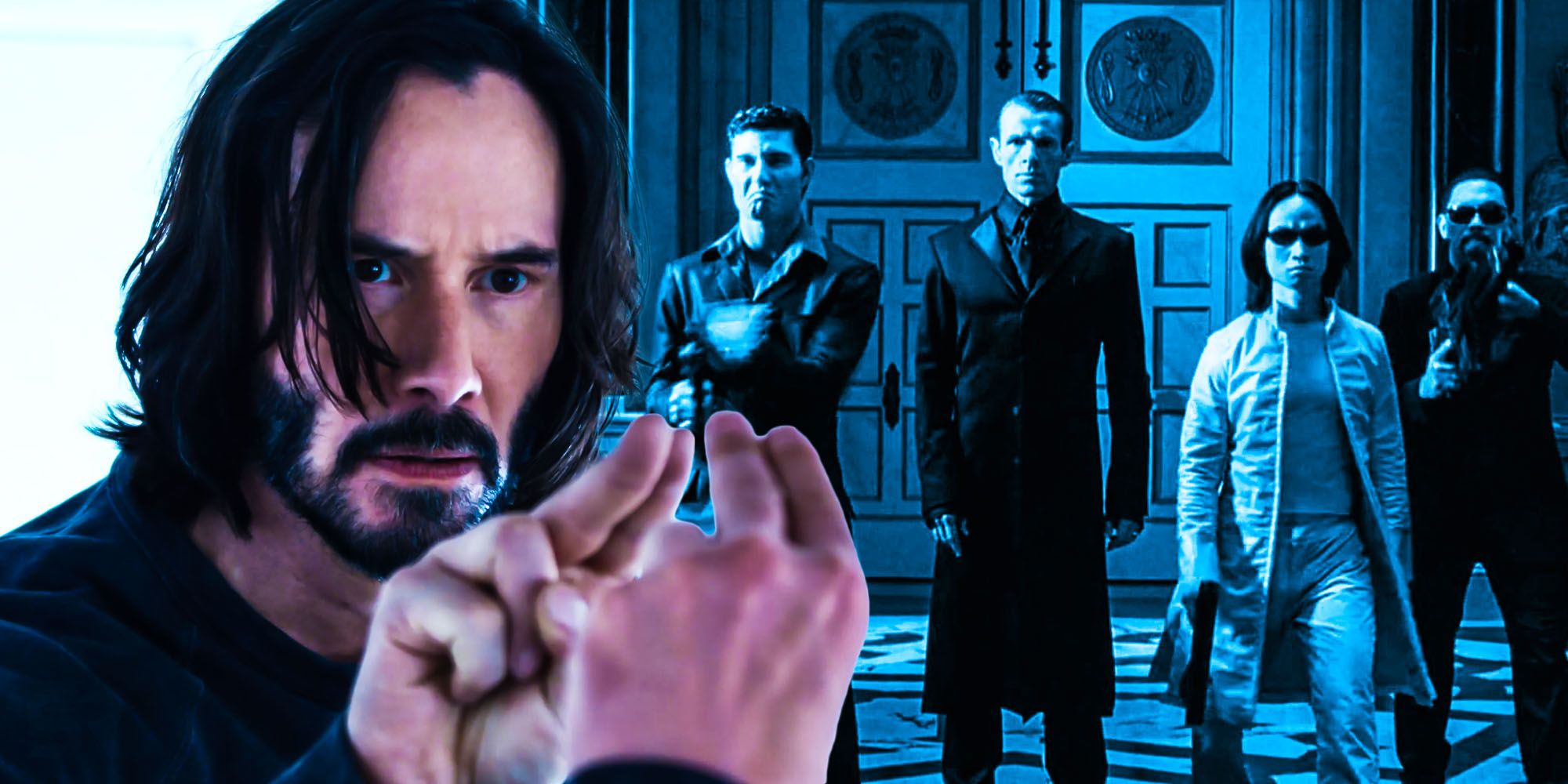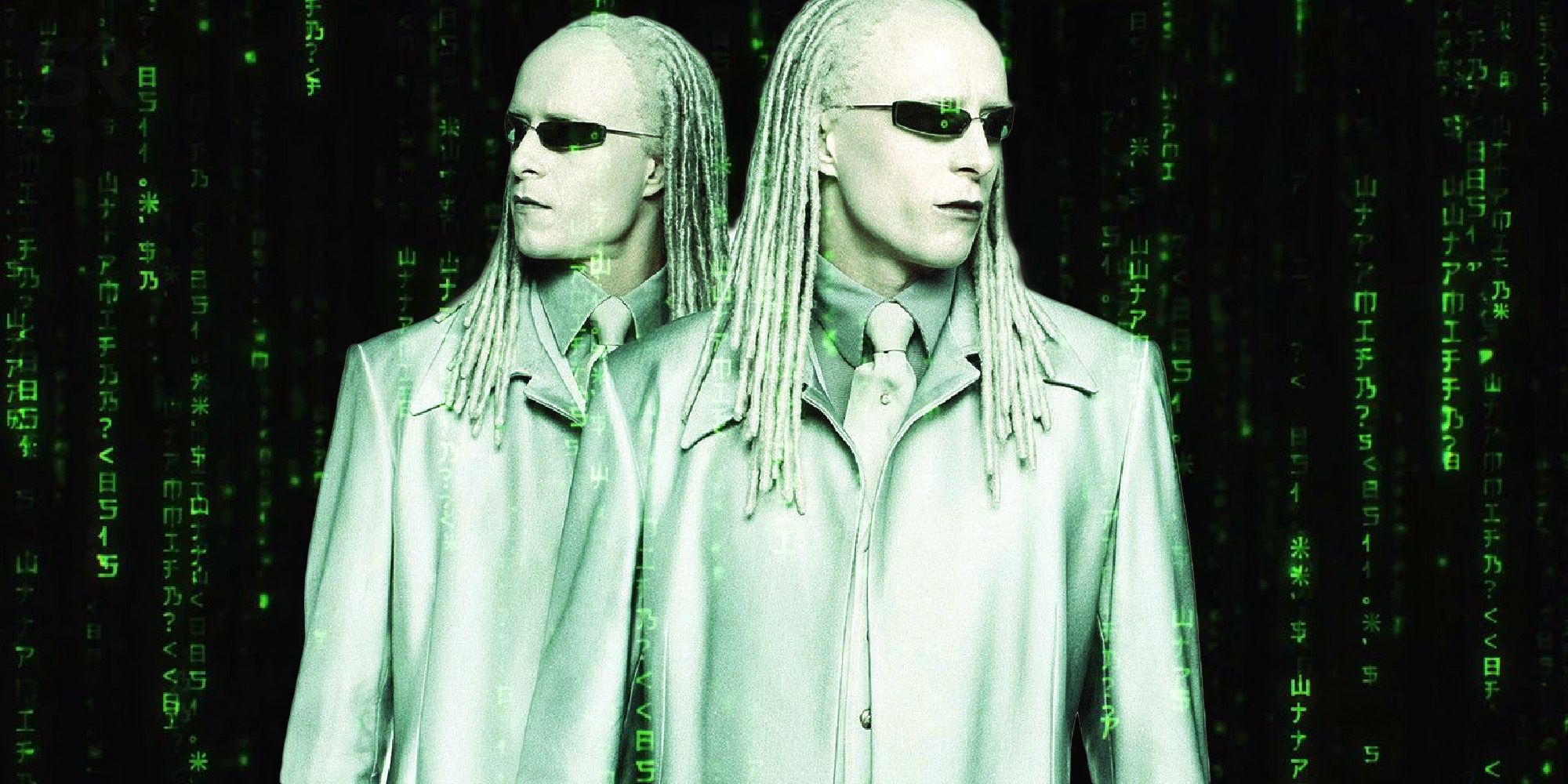Warning! SPOILERS for The Matrix Resurrections
The Matrix Resurrections missed a big opportunity to retcon a plot point that was never expanded on in The Matrix Reloaded. The fourth film in the Matrix franchise brought back the Merovingian, otherwise known as the Frenchman, and his army of exiled programs for a fleeting cameo. However, The Matrix Resurrections didn't bring back the Twins or any of the other iconic henchmen from The Matrix Reloaded. In doing so, it missed out on exploring the potential for supernatural creatures in the Matrix, such as vampires, aliens, and even werewolves.
The Matrix Reloaded introduced the only supernatural elements in the franchise: the Twins (though they were actually just rogue programs). These exiled programs in The Matrix had the unique ability to transform their bodies into a ghostly state, allowing them to phase through solid objects. This proved useful when they took on Morpheus and Trinity in a car chase as they tried to retrieve the Keymaker. The film also confirmed that the Merovingian's other henchmen were also exiled programs who distorted the Matrix's desired realism, leading its people to come up with urban legends and myths about the supernatural: from Bigfoot to aliens. Persephone even ended up killing Abel, a henchman who was supposedly a werewolf, with a silver bullet.
It was a great shame that The Matrix Reloaded never capitalized on its supernatural villains beyond the Twins, and an even greater shame that The Matrix Resurrections also ignored them. The potential for creative antagonists within the Matrix was seemingly endless, as it was made clear that its sentinel overlords could implement any kind of program that would defy real-world logic. It was thus disappointing that, besides the Twins, all antagonists in the Matrix series were either humans or agents. In The Matrix Resurrections, every antagonist was a standard human program, with the exceptions of Agent Smith and the Analyst.
The film's choice to bring back the exile programs ultimately amounted to very little, as they once again only took their human forms. It would've been far more exciting and refreshing to see Neo and Bugs battle actual vampires and werewolves, who used the abilities of these mythological creatures, instead of just superficially donning their persona. Moreover, it was odd that the film chose not to include more special effects-heavy antagonists to add variety to the threat to the Resistance members, particularly as advances in CGI technology made this more feasible for the franchise than ever before.
The Matrix Resurrections was notable for its lack of a visual identity of its own, and many critics suggested that its action and style were dull when compared to the original Matrix trilogy movies. The exile programs in their true forms could've thus given the film an immense aesthetic upgrade. Werewolves, vampires, and other creatures were only hinted at in the original trilogy, and The Matrix Resurrections could've finally bought them to life to give it a memorable cast of characters: its own version of the Twins. Kung fu fights with aggressive werewolves would've added a much-needed variety to the action that went beyond punches, kicks, and guns, and introduced a foe that could've challenged the One and his comrades.
The impact of the return of the Merovingian and the exile programs ended up being an apt metaphor for The Matrix Resurrections as a whole: it was neat fan service that ultimately proved unnecessary to the franchise. Had the movie implemented the supernatural forms of its antagonists, it could have delivered an action scene that was wholly unique and wholly its own. Unfortunately, The Matrix Resurrections director, Lana Wachowski, still wouldn't let audiences see the exile programs in all their frightening glory.


